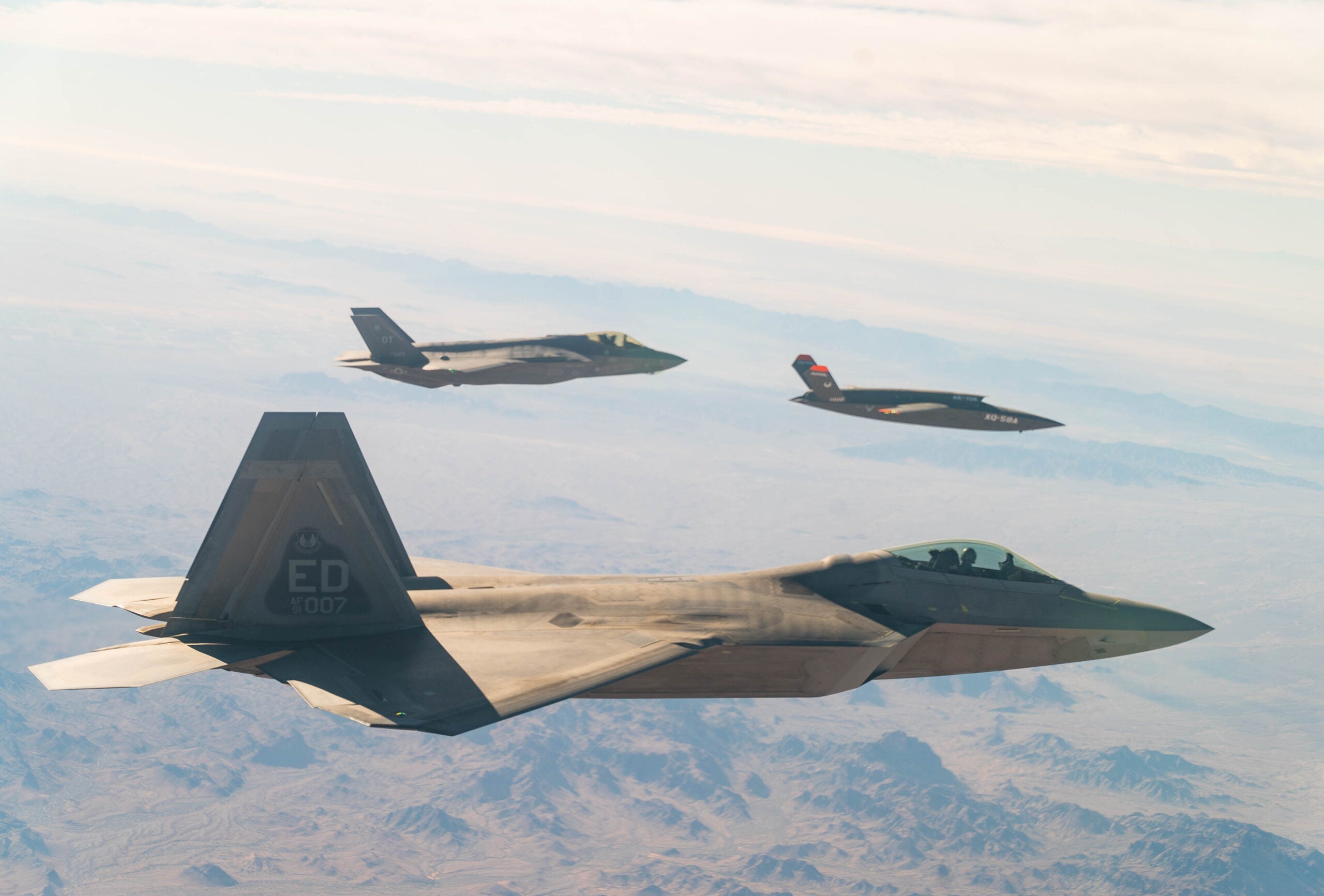
The US Air Force (USAF) has announced it successfully shared data between F-35Bs, F-35As, and F-22 Raptors using the ‘gatewayONE’ communications device.
The stealth fighter jets use different digital ‘languages’ meaning the jets are limited to communicating with each other and command and control centres through legacy tactical data connections.
During the tests, the jets were able to share ‘actionable operational data’ in their native languages through multiple sources for the first time. The test was conducted as part of the USAF’s push to develop the Advanced Battle Management System or ABMS, which has been dubbed the ‘Internet of Military Things’.
The F-35 uses the Multifunctional Advanced Data Link (MADL) and the F-22 uses the Intra-Flight Data Link system. Using the ‘gatewayONE’ payload data can be translated between the two sources and during the tests directly pushed data to the cockpits of the aircraft rather than via a ground operations centre or tactical node.
During the test flights on 9 December, an ‘attritableONE’ XQ-58A Valkyrie uncrewed aerial vehicle (UAV) fitted with the gatewayONE payload, during the flight the UAV also conducted a first semi-autonomous flight alongside the F-35 and F-22.
During tests, nine out of 18 objectives were achieved. Shortly after takeoff, however, the Valkyrie’s communications payload lost connectivity, meaning some targets could not be met.
During the test, the position of each aircraft in the formation was transmitted through gatewayONE, which would allow battle managers to control operations better. The system also allowed ground controllers to pass cues to and from the two aircraft platforms and allowed a cue to be passed from the F-35A to F-22 Raptor in another first.
Bi-directional data was translated between the two aircraft into their native languages and then displayed ‘organically’ on the respective aircraft’s cockpit systems.
Air Force Lifecycle Management Center (AFLMC) gatewayONE programme manager Lieutenant Colonel Kate Stowe said: “Testing is all about pushing the limits of what’s possible, finding out where the toughest challenges are, and adapting creative solutions to overcoming difficult problem sets.
“The real win of the day was seeing the gatewayONE establish a secure two-way translational data path across multiple platforms and multiple domains. That’s the stuff ABMS is all about.”
ABMS is the USAF’s attempt to develop a so-called ‘Internet of Military Things’ and is part of the US Military’s overall push to connect all of its sensors and shooters through Joint All-Domain Command and Control (JADC2) system.
59th Test and Evaluation Squadron F-35 pilot Lieutenant Colonel Eric Wright said: “The gatewayONE payload really showed what’s possible and helped us take a big step towards achieving (Joint All-Domain Command and Control).
“This critical capability provides additional connections between our advanced fighters and other forces and battle managers across all domains. The future is promising, and gatewayONE will allow the F-22 and F-35 to connect to and feed data sources they’ve never before accessed. Those future connections will bring additional battlefield awareness into the cockpit and enable integrated fires across U.S. forces.”
Additional tests saw a communications pathway established between a KC-46 Pegasus tanker and a ground node using commercial internet standards and the transmission of full-motion video to a ground controller from a Marine Corps F-35B.
The Air and Space Force’s chief architect Preston Dunlap said: “If fifth-generation platforms are going to be quarterbacks of a joint-penetrating team, we have to be able to communicate with those quarterbacks in an operationally relevant manner and enable data sharing between them, to them, and from them.
“For years people said it couldn’t be done. Today the team turned another page toward making the impossible possible,”
Dunlap added: “In just 12 months, the team has opened the door to a world where we can put the power of an operations centre into the cockpit at the tactical edge.”



